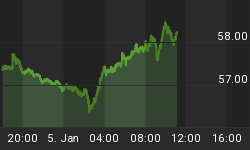After hearing the dire warnings of deflation that have become the standard talking points of most economists, American investors may be reaching for a bottle of Prozac. I believe that their anxiety is misplaced. Unfortunately, modern economists don't understand what deflation is or why, in reality, we have much more to fear from inflation.
Moderate deflation is actually the natural trend of a productive economy. If a producer can increase his output per unit of input, then he can afford to expand his market by lowering prices while still increasing profits. In that way, deflation allows consumers to buy items that they may not have previously afforded. It also promotes savings, which is essential for investment and capital development. (For a simple description of this process, read Chapter 5 of Peter's new book, How an Economy Grows and Why it Crashes)
Deflation is also the normal consequence of a contracting economy. In a recession, there is a reduction in the amount of goods and services available for consumption. In order to keep prices from rising (due to shrinking supply), the central bank should allow the money supply to fall in line with the reduction in output. Also, during an economic contraction, consumers put downward pressure on prices by responsibly selling assets to pay down debt.
Many economists mistakenly claim that the Great Depression of the 1930s was caused by a 30% contraction in the money supply. The truth is that all depressions are caused by the reversal of a massive credit expansion. The reduction in money supply is part of a healing process that brings the overall level of prices back to a sustainable condition.
Looking at today's situation, just because we have a few months of sequential declines in CPI and PPI doesn't mean that deflation has become a secular trend. Year-over-year (YOY) growth in the M2 money supply is 2%; therefore, since the money supply is still growing, we are experiencing inflation rather than deflation.
Considering that evidence of inflation abounds, the Federal Reserve has pulled off a good trick by convincing Americans that we are about to "suffer" through a protracted period of deflation. Why have we been so easily duped? In the past ten years, the monetary base has grown from $600 billion to $2 trillion. This expansion has accompanied a rise in the price of gold from below $300/oz at the beginning of the decade to around $1,200/oz today. The price of gold is the best arbiter for a currency's purchasing power. Therefore, gold is still telling us that inflation is eroding the value of our dollar.
Other commodities, like crude oil, are telling the same story. Ten years ago, a barrel of oil was trading for $25. Today, it is $78.
Since 2001, the US dollar has lost over 30% of its value against our largest trading partners and more than 7% of its value since June alone. These facts are causing the mainstream economists to wring their hands about deflation?
More recently, YOY increases in the CPI, PPI, and import prices were 1.1%, 2.7%, and 4.5% respectively. Even though these YOY increases aren't evidence of runaway inflation, they still can't be construed as deflation.
The truth is consumers should be allowed the advantages of falling prices. Aggregate hours worked are down 8% since their peak in March of 2008. Since the money supply should fall along with the decline of the number of people in the work force, price levels should be falling too. But that is not what we see today.
If the monetary base continues to stagnate and banks stop lending to the government through Treasury purchases, we could see a deflationary environment sometime in the future. But given the current policy drift, that scenario appears unlikely.
Even if deflation were to take hold, it would not be something to fear. Lower prices are beneficial for those who have been thrown out of work, and falling prices allow asset values to reach a level that can be sustained by the free market. The fact is that prices should currently be falling in order to reconcile the imbalances brought about by decades of profligate spending and borrowing. Deflation... I say bring it on!
But that is not what is occurring today. Because of the towering level of US sovereign debt, it is inflation that remains the clear and present danger.
The national debt now stands at $13.24 trillion - nearly 92% of the entire output of goods and services in the US economy this year. In its mid-session review, the OMB revised its 2011 federal budget deficit projection to $1.42 trillion, down only slightly from the $1.47 trillion estimate for this year's deficit. Given this intractable and unsustainable level of obligations, the last thing the Fed and Administration can tolerate is to increase the burden of that debt by allowing the money supply to shrink.
A reduction in the supply of money (deflation) would cause the cost of debt to rise. An increase in the purchasing power of money also means it is more difficult to acquire the new money needed to reduce debt levels. Conversely, increasing the supply of money (inflation) reduces the cost of debt. With these incentives firmly entrenched, the last thing Americans will have to "worry" about is deflation.
Given the obvious mathematics, one wonders why Treasury yields remain at historic lows. The bond vigilantes are indeed in a coma. However, despite the mountain of complacency that their slumber has inspired, this golden age of E-Z financing can't last forever.
For in-depth analysis of this and other investment topics, subscribe to The Global Investor, Peter Schiff's free newsletter. Click here for more information.
New Special Report Available: Peter Schiff's Five Favorite Gold & Silver Mining Stocks: Click here to download.
Click here for a description of Peter Schiff's just-released economic fable, How an Economy Grows and Why It Crashes.
Please note: Opinions expressed are those of the writer.
















